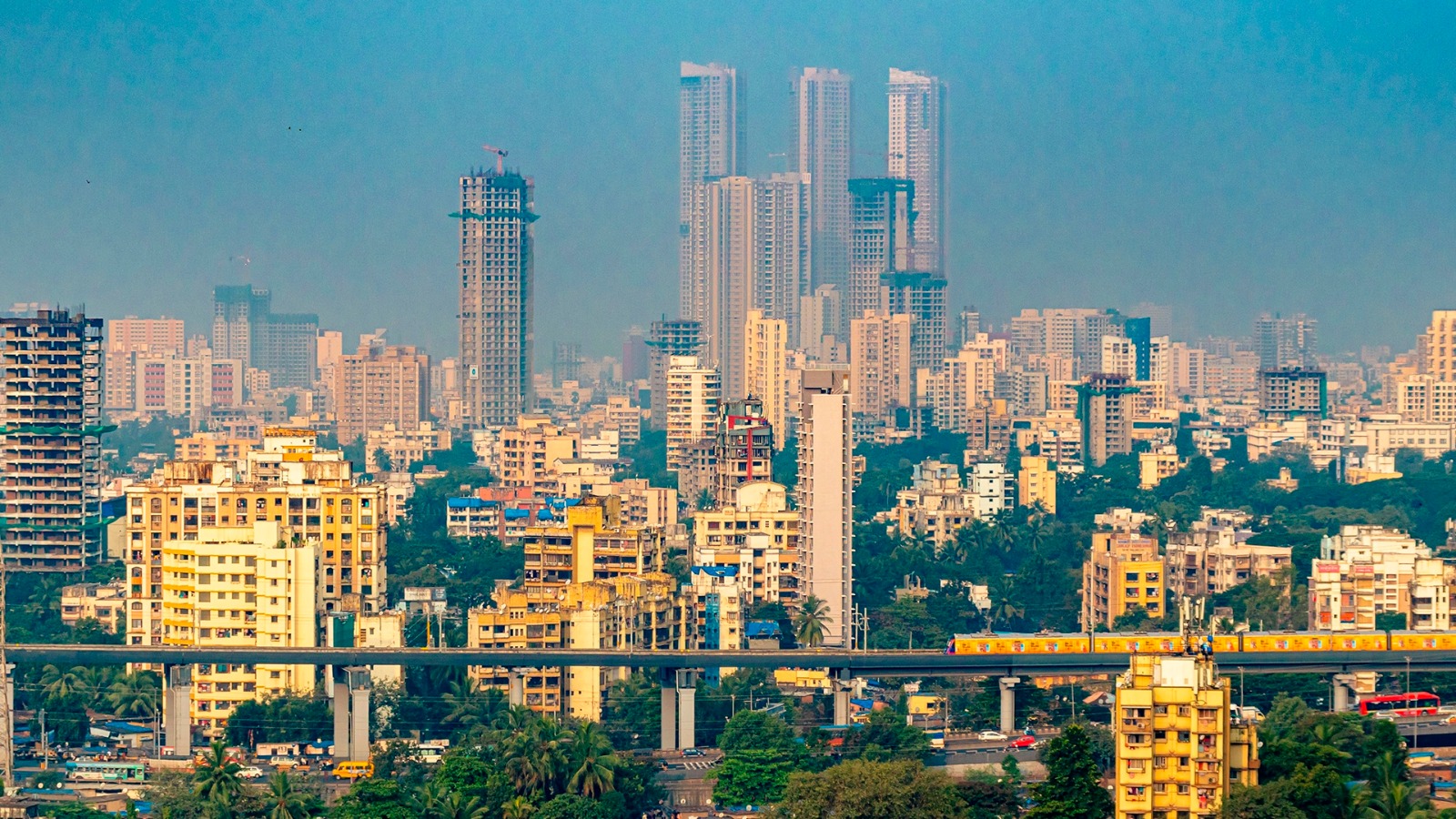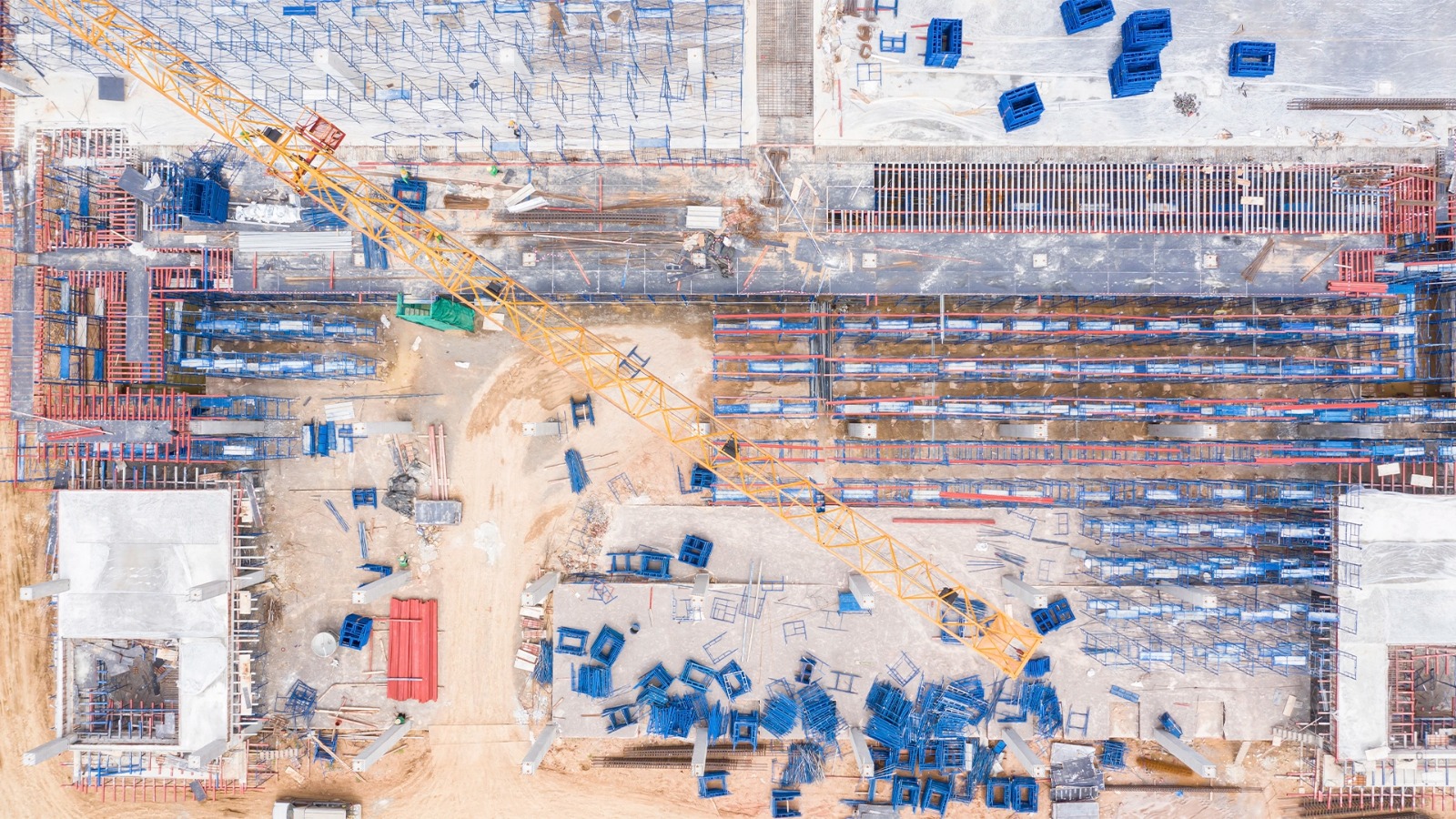 Credit: toweringgoals | Freepik
Credit: toweringgoals | Freepik2024 Indian Offices & Parks Outlook
November 24, 2023Real Estate
Written by Rory Hickman
With changing perspectives on investment, India's position in the global value chain has become increasingly crucial. One of the prominent themes shaping this market is the integration of ESG principles into every aspect of organisations, although the challenge lies in distinguishing genuine sustainability efforts from greenwashing.
Measuring ESG performance can play a significant role in these outcomes, which is clearly exemplified by the varying returns from companies like Chevron and Tesla, with such measurements having had a profound impact on the bottom line.
Cost is no longer the sole parameter driving decisions due to an increasing understanding of the importance of seeking locations that offer not only cost-effectiveness but also access to skilled talent, supportive infrastructure, and a positive business ecosystem.
The Post-COVID return to offices has been slow and cautious. Developers are now exploring ways to enhance their spaces to align with the evolving needs of businesses and employees, focusing on flexible layouts, wellness amenities, and remote work integration.
The rise of technology and remote work has expanded the range of options beyond traditional urban centres, enabling businesses to consider new locations that provide unique advantages.
In today's work environment, hygiene and hospitality services have become crucial factors for every employee. Companies are increasingly catering to these demands to ensure a safe and comfortable working environment.
The easing of foreign investment regulations has resulted in increased cross-border transactions, driving the growth of commercial property developments.
FDI for the financial year 2022-23 stands at a total of USD 70.97 billion. Out of this, FDI equity inflows have reached more than USD 46 billion.
The biggest contributors to these investments are Mauritius with 26%, Singapore with 23%, the USA with 9%, the Netherlands with 7%, and Japan with 6%.
This expansion reflects the country's growing prominence as a preferred destination for companies establishing these centres, showcasing its skilled talent pool and favourable business environment.
Technological advancements in the CRE industry, such as proptech and smart building technologies, have further attracted investors.

Striking the right balance between the benefits of Tier 2 cities and the specific requirements of R&D operations is crucial to capitalise on the emerging opportunities and drive sustained growth.
While co-working spaces have firmly established themselves in the major metropolitan areas, their penetration into tier 2 cities is relatively limited. Cities like Pune, Ahmedabad, Jaipur, and others are witnessing slower adoption rates due to various factors, including the size of the workforce and the prevailing traditional work culture.
Kochi is gaining recognition as a favourable investment destination, especially in the commercial real estate sector. With its strategic location along the Arabian Sea and well-connected transportation infrastructure, Kochi presents an appealing prospect for businesses seeking to establish a presence in South India.
By collaborating with local experts, companies can navigate the unique challenges and opportunities in these regions more effectively, make informed decisions, and establish trust within the communities they aim to serve.
This strategic approach not only facilitates successful expansion but also contributes to the sustainable growth and economic development of these regions.

The Securities and Exchange Board of India (SEBI) has proposed a new regulation for micro, medium, and small (MSM) REITs that requires them to hold a minimum of 15% of the total units of the MSME REIT for each scheme for at least three years from the date of listing.
This proposal has raised concerns among fractional ownership platforms as it would require them to put up a significant amount of money up front, potentially making their business economically unviable.
Fractional ownership platforms route investors' money through special-purpose vehicles to buy assets, but their balance sheet sizes are relatively small, making it challenging to lock up large amounts of money for an extended period.
The platforms argue that SEBI's proposal goes against the essence of being a technology platform and may threaten their existence. Other points of disagreement with the proposal include restrictions on MSM REITs' ability to raise debt funding and limitations on the types of assets they can hold.
While many players support regulation and are optimistic that they will evolve based on industry feedback, these concerns must be addressed going forward.
Digital fractional ownership is an innovative approach to property investment, allowing multiple investors to collectively own a fraction of a commercial property.
While it presents exciting prospects for diversification and reduced entry barriers, this asset class comes with inherent risks. Unlike traditional real estate investments, digital fractional ownership often involves dealing with intangible assets and can be subject to market volatility.
The post-pandemic landscape has impacted the commercial real estate sector, particularly with the IT industry's return-to-work strategies, which have struggled to entice workers back to the office.
While Mumbai-based companies have acquired significant office space, the next big trend could be Tier 2 cities. However, global market recessions and inflation rates continue to pose challenges to the industry's volume of activity.
Occupiers are driving the demand for green spaces that prioritise wellness and sustainability, shaping developers' return-to-work strategies. The reduction of energy consumption and carbon emissions is the top ESG factor influencing property value.
India's major cities, including Delhi-NCR, Mumbai, Bengaluru, Pune, Chennai, and Kolkata, have embraced the trend, boasting a substantial stock of certified green buildings, accounting for 30% of the market.
Ensuring sustainable practices in construction and infrastructure development is also a vital concern for the industry's future growth.

As the notion of work continues to evolve, tenants are increasingly seeking flexible leasing options that adapt to their ever-changing needs and spaces that foster employee convenience, well-being, and productivity.
The once prominent idea of a static office space is now overshadowed by the allure of dynamic workplaces that offer an ecosystem of amenities and services. This new breed of tenants emphasises the game-changing potential of flexibility in leases.
Landlords must decide whether to pursue means of filling larger spaces or find ways to shrink or divide these areas in order to accommodate a greater number of tenants.
This is a key consideration in concert with the need to transform existing properties to meet the changing requirements of occupiers
As cities face ever-increasing traffic challenges, developers and landlords are presented with the task of crafting accessible and well-connected campuses to encourage physical attendance. The correlation between commute ease and employee willingness to return to the office is evident.
Dubai boasts an impressive 85% office attendance due to transport facilities, while the US lags behind at 25%. Employers must strive to understand employee preferences through surveys and tailor the workplace to cater to their unique needs.
The issue of traffic congestion resulting from new parks is another factor that must be accounted for, with some occupiers requesting to have entrance checkpoints moved a significant distance within the facility in order to limit heavy traffic around entry roads.
Transport considerations are particularly important when selecting locations in tier 2/3 cities which may lack extensive transport networks and infrastructure.
This approach cultivates a sense of belonging and fosters a positive work culture, both of which are essential for enhancing employee productivity and loyalty.
It has also been shown that tenants are often willing to pay higher rents when developers provide a full spectrum of services and facilities that have a positive impact on employee office attendance rates.
Increased demand for greater flexibility has been another outcome of the pandemic, with many industry leaders observing that employees are generally amenable to spending three days per week in the office due to the benefits in work/life balance.
This flexibility can also beneficially impact commute times by reducing traffic due to fewer employees travelling to the office on a daily basis. However, interest in such schemes must be measured by surveying workers and accommodating their feedback.

Difficulty in acquiring land stems from high prices and unyielding landowners, and splitting costs further complicates the process. Land acquisition expenses, a major concern for developers, have prompted strategies like purchasing after approvals to mitigate project risks.
The use of data in acquisition strategies faces pressure, with the residential Joint Development Agreements (JDAs) market showing resilience, while the office JDA market becomes more challenging.
Developers must recognize the significance of incorporating emotional factors in residential acquisition alongside practical considerations.
Success often hinges on strong relationships that can pave the way for much-needed financial support.
The hindrance of stalled projects due to approval delays and the issue of land titling complicates matters, with billions in potential foreign investment untapped. To address these issues, a hybrid funding model encompassing equity and debt financing is suggested, aiming to distribute risk and ensure stakeholders' shared commitment to project success.
These challenges have led some developers to opt for leasing arrangements instead. Indian markets are also facing liquidity constraints, further exacerbating the funding woes for developers.
Developers are increasingly exploring the creation of alternative investment funds (AIFs) to secure project funding.
The problem of Nalas (drainage channels) adds to the complexities, restricting the use of certain land parcels and constricting development possibilities.
The difficulties don't end with acquiring the land. Post-sale, developers may encounter title issues, resulting in delayed or stalled projects due to permit disputes lasting anywhere from one to five years.
Lenders are promoting developers' projects, but the viability of financing hinges on the developers' post-pandemic experiences, such as the rise of remote work and the demand for flexible office spaces.

Traditional methods are being reevaluated as developers focus on incorporating green areas, promoting a sense of well-being among future residents.
This cautious approach is driven by concerns about the ability of developers to repay loans, meet their financial obligations, and ensure the successful completion of their ventures.
In response to these hurdles, developers are actively considering and exploring alternative avenues for funding. One promising option is the utilisation of debt funds and other innovative financing solutions.
Debt funds can offer a reliable source of capital that may be more accessible than traditional lending channels, providing developers with the financial resources necessary to breathe new life into their real estate projects.
Find out more about GRI Club activities in India and our unique platform where industry leaders engage in open dialogue, share insights, and build relationships. As a member, you also gain access to our online hub for seamless networking, correspondence, and unrestricted content, strengthening your position within the dynamic landscape of Real Estate in India.
CRE Investment Strategies
The demand for commercial spaces in India has been robust, with approximately 12-14 million square feet absorbed in the first six months alone and an average IRR of 21% within four years. A consistent IRR of 12-16% showcases the market's potential for long-term gains. However, forecasts remain cautious due to recent drops in office absorption when compared to 2022.With changing perspectives on investment, India's position in the global value chain has become increasingly crucial. One of the prominent themes shaping this market is the integration of ESG principles into every aspect of organisations, although the challenge lies in distinguishing genuine sustainability efforts from greenwashing.
Measuring ESG performance can play a significant role in these outcomes, which is clearly exemplified by the varying returns from companies like Chevron and Tesla, with such measurements having had a profound impact on the bottom line.
Social Considerations
Social impact and diversity have also come into sharp focus, prompting discussions on how to foster a diversified workforce and promote inclusion. By prioritising these issues it will be possible to build more resilient, innovative, and successful teams.Cost is no longer the sole parameter driving decisions due to an increasing understanding of the importance of seeking locations that offer not only cost-effectiveness but also access to skilled talent, supportive infrastructure, and a positive business ecosystem.
The Post-COVID return to offices has been slow and cautious. Developers are now exploring ways to enhance their spaces to align with the evolving needs of businesses and employees, focusing on flexible layouts, wellness amenities, and remote work integration.
The rise of technology and remote work has expanded the range of options beyond traditional urban centres, enabling businesses to consider new locations that provide unique advantages.
In today's work environment, hygiene and hospitality services have become crucial factors for every employee. Companies are increasingly catering to these demands to ensure a safe and comfortable working environment.
Attracting Global Capital
India's CRE sector has benefited from an influx of Foreign Direct Investment (FDI), creating a favourable environment for international businesses to establish their presence in the country.The easing of foreign investment regulations has resulted in increased cross-border transactions, driving the growth of commercial property developments.
FDI for the financial year 2022-23 stands at a total of USD 70.97 billion. Out of this, FDI equity inflows have reached more than USD 46 billion.
The biggest contributors to these investments are Mauritius with 26%, Singapore with 23%, the USA with 9%, the Netherlands with 7%, and Japan with 6%.
Global Capability
India currently has approximately 1600 Global Capability Centres (GCCs) with a workforce exceeding 1.6 million. According to projections by NASSCOM, the number of GCCs in India is anticipated to exceed 2000 by 2026-27.This expansion reflects the country's growing prominence as a preferred destination for companies establishing these centres, showcasing its skilled talent pool and favourable business environment.
Technological advancements in the CRE industry, such as proptech and smart building technologies, have further attracted investors.

India has a workforce exceeding 1.6 million. (Image: An Qi Wang | Adobe Stock)
Tier 2 and 3 Cities
Tier 2 cities are emerging as attractive destinations for both office buildings and Research & Development (R&D) units. While these cities offer numerous advantages, the selection of the ideal location for R&D facilities demands careful consideration of factors such as proximity to academic institutions, availability of specialised talent, and a conducive ecosystem that fosters innovation.Striking the right balance between the benefits of Tier 2 cities and the specific requirements of R&D operations is crucial to capitalise on the emerging opportunities and drive sustained growth.
While co-working spaces have firmly established themselves in the major metropolitan areas, their penetration into tier 2 cities is relatively limited. Cities like Pune, Ahmedabad, Jaipur, and others are witnessing slower adoption rates due to various factors, including the size of the workforce and the prevailing traditional work culture.
Kochi is gaining recognition as a favourable investment destination, especially in the commercial real estate sector. With its strategic location along the Arabian Sea and well-connected transportation infrastructure, Kochi presents an appealing prospect for businesses seeking to establish a presence in South India.
Local Wisdom
Seeking the insights of local expertise can be vital when expanding into tier 2/3 cities. As developers and investors seek to tap into the growth potential of these emerging markets, they are increasingly realising the importance of leveraging the knowledge of professionals with deep-rooted connections and familiarity with the local dynamics.By collaborating with local experts, companies can navigate the unique challenges and opportunities in these regions more effectively, make informed decisions, and establish trust within the communities they aim to serve.
This strategic approach not only facilitates successful expansion but also contributes to the sustainable growth and economic development of these regions.

Local expertise is crucial when expanding into tier 2/3 cities. (Image: onkar_gotale | Unsplash)
REITs vs Fractional Ownership
Industry leaders are increasingly bullish on fractional ownership, believing that selling properties via these means can outperform traditional strata sales due to increased yield and capital value.The Securities and Exchange Board of India (SEBI) has proposed a new regulation for micro, medium, and small (MSM) REITs that requires them to hold a minimum of 15% of the total units of the MSME REIT for each scheme for at least three years from the date of listing.
This proposal has raised concerns among fractional ownership platforms as it would require them to put up a significant amount of money up front, potentially making their business economically unviable.
Fractional ownership platforms route investors' money through special-purpose vehicles to buy assets, but their balance sheet sizes are relatively small, making it challenging to lock up large amounts of money for an extended period.
The platforms argue that SEBI's proposal goes against the essence of being a technology platform and may threaten their existence. Other points of disagreement with the proposal include restrictions on MSM REITs' ability to raise debt funding and limitations on the types of assets they can hold.
While many players support regulation and are optimistic that they will evolve based on industry feedback, these concerns must be addressed going forward.
Digital fractional ownership is an innovative approach to property investment, allowing multiple investors to collectively own a fraction of a commercial property.
While it presents exciting prospects for diversification and reduced entry barriers, this asset class comes with inherent risks. Unlike traditional real estate investments, digital fractional ownership often involves dealing with intangible assets and can be subject to market volatility.
Market Appetite
Growth prospects for REITs remain promising, with an estimated one billion square feet set to enter the market in the coming year.The post-pandemic landscape has impacted the commercial real estate sector, particularly with the IT industry's return-to-work strategies, which have struggled to entice workers back to the office.
While Mumbai-based companies have acquired significant office space, the next big trend could be Tier 2 cities. However, global market recessions and inflation rates continue to pose challenges to the industry's volume of activity.
ESG Regulations
ESG considerations have become an essential consideration as both investors and occupiers increasingly place a premium on green leases and energy-efficient, environmentally friendly buildings. Non-ESG compliant properties may face disqualification and higher operational costs.Occupiers are driving the demand for green spaces that prioritise wellness and sustainability, shaping developers' return-to-work strategies. The reduction of energy consumption and carbon emissions is the top ESG factor influencing property value.
India's major cities, including Delhi-NCR, Mumbai, Bengaluru, Pune, Chennai, and Kolkata, have embraced the trend, boasting a substantial stock of certified green buildings, accounting for 30% of the market.
Ensuring sustainable practices in construction and infrastructure development is also a vital concern for the industry's future growth.

India's major cities, including Delhi-NCR, Mumbai, Bengaluru, Pune, Chennai, and Kolkata, have embraced the ESG trend. (Image: wirestock | Envato)
Landlords and Tenants
While retail spaces have continued to perform well, and landlords are seeing occupancy as high as 97%, the office sector still faces challenges. The shifting demands of occupiers and employees are driving a paradigm shift in the commercial real estate sector.As the notion of work continues to evolve, tenants are increasingly seeking flexible leasing options that adapt to their ever-changing needs and spaces that foster employee convenience, well-being, and productivity.
The once prominent idea of a static office space is now overshadowed by the allure of dynamic workplaces that offer an ecosystem of amenities and services. This new breed of tenants emphasises the game-changing potential of flexibility in leases.
Commercial Crossroads
Amid the transition towards flexible leasings, landlords and asset owners find themselves at a crossroads. The challenge lies in building the necessary infrastructure and amenities to accommodate the demands of modern tenants while balancing costs and space availability.Landlords must decide whether to pursue means of filling larger spaces or find ways to shrink or divide these areas in order to accommodate a greater number of tenants.
This is a key consideration in concert with the need to transform existing properties to meet the changing requirements of occupiers
The Commute Conundrum
For employees, the decision to return to the office revolves around the convenience of their commute and the overall experience the workplace offers.As cities face ever-increasing traffic challenges, developers and landlords are presented with the task of crafting accessible and well-connected campuses to encourage physical attendance. The correlation between commute ease and employee willingness to return to the office is evident.
Dubai boasts an impressive 85% office attendance due to transport facilities, while the US lags behind at 25%. Employers must strive to understand employee preferences through surveys and tailor the workplace to cater to their unique needs.
The issue of traffic congestion resulting from new parks is another factor that must be accounted for, with some occupiers requesting to have entrance checkpoints moved a significant distance within the facility in order to limit heavy traffic around entry roads.
Transport considerations are particularly important when selecting locations in tier 2/3 cities which may lack extensive transport networks and infrastructure.
Employee Engagement
To attract employees back to the office, employers must look beyond the physical appearance of a property. Instead, they should focus on curating an enticing office ecosystem that encompasses various amenities, services, and recreational opportunities.This approach cultivates a sense of belonging and fosters a positive work culture, both of which are essential for enhancing employee productivity and loyalty.
It has also been shown that tenants are often willing to pay higher rents when developers provide a full spectrum of services and facilities that have a positive impact on employee office attendance rates.
Increased demand for greater flexibility has been another outcome of the pandemic, with many industry leaders observing that employees are generally amenable to spending three days per week in the office due to the benefits in work/life balance.
This flexibility can also beneficially impact commute times by reducing traffic due to fewer employees travelling to the office on a daily basis. However, interest in such schemes must be measured by surveying workers and accommodating their feedback.

To attract employees back to the office, employers should focus on curating an enticing office ecosystem. (Image: Ayyathullah Ahmad | Adobe Stock)
Funding & Acquisition Challenges
The surge in land acquisition for real estate development in India has led to increased competition for prime land, particularly in cities like Bengaluru, where rising land prices pose challenges for developers seeking cost-effective options.Difficulty in acquiring land stems from high prices and unyielding landowners, and splitting costs further complicates the process. Land acquisition expenses, a major concern for developers, have prompted strategies like purchasing after approvals to mitigate project risks.
The use of data in acquisition strategies faces pressure, with the residential Joint Development Agreements (JDAs) market showing resilience, while the office JDA market becomes more challenging.
Developers must recognize the significance of incorporating emotional factors in residential acquisition alongside practical considerations.
Funding Acquisitions
While land opportunities may be plentiful, securing the necessary funds to bring projects to fruition is proving to be a daunting task. Financial projects are taking centre stage as developers grapple with a scarcity of funding sources.Success often hinges on strong relationships that can pave the way for much-needed financial support.
The hindrance of stalled projects due to approval delays and the issue of land titling complicates matters, with billions in potential foreign investment untapped. To address these issues, a hybrid funding model encompassing equity and debt financing is suggested, aiming to distribute risk and ensure stakeholders' shared commitment to project success.
These challenges have led some developers to opt for leasing arrangements instead. Indian markets are also facing liquidity constraints, further exacerbating the funding woes for developers.
Developers are increasingly exploring the creation of alternative investment funds (AIFs) to secure project funding.
The problem of Nalas (drainage channels) adds to the complexities, restricting the use of certain land parcels and constricting development possibilities.
Developer Difficulties
Government-proposed opportunities come with price tags that do not align with developers' financial viability, making the decision to purchase a daunting one.The difficulties don't end with acquiring the land. Post-sale, developers may encounter title issues, resulting in delayed or stalled projects due to permit disputes lasting anywhere from one to five years.
Lenders are promoting developers' projects, but the viability of financing hinges on the developers' post-pandemic experiences, such as the rise of remote work and the demand for flexible office spaces.

The viability of deals is often falling short considering soaring construction costs. (Image: Kalyakan | Adobe Stock)
Construction Costs
Land availability and soaring construction costs are major concerns for developers as they strive to meet the ever-increasing demand for properties. While the government offers new opportunities, the viability of these deals often falls short due to unrealistic pricing.Traditional methods are being reevaluated as developers focus on incorporating green areas, promoting a sense of well-being among future residents.
Refinancing & Alternative Funding
The ability to secure refinancing amidst financial uncertainties is proving to be an uphill battle for many developers. Lenders are exercising caution and hesitating to extend credit to developers who are experiencing losses or uncertainties, fearing potential risks to the long-term viability of the projects.This cautious approach is driven by concerns about the ability of developers to repay loans, meet their financial obligations, and ensure the successful completion of their ventures.
In response to these hurdles, developers are actively considering and exploring alternative avenues for funding. One promising option is the utilisation of debt funds and other innovative financing solutions.
Debt funds can offer a reliable source of capital that may be more accessible than traditional lending channels, providing developers with the financial resources necessary to breathe new life into their real estate projects.
Find out more about GRI Club activities in India and our unique platform where industry leaders engage in open dialogue, share insights, and build relationships. As a member, you also gain access to our online hub for seamless networking, correspondence, and unrestricted content, strengthening your position within the dynamic landscape of Real Estate in India.



